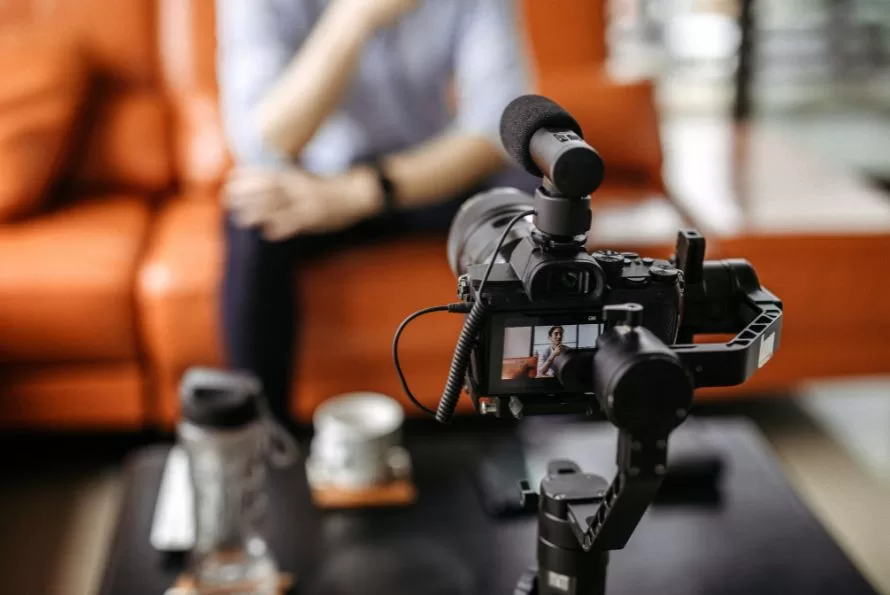

Self-Service in B2B: Navigating the Digital Buyer’s Journey

According to HubSpot, 81% of consumers try to resolve issues themselves before contacting a service rep. Even more notably, 77% of customers state that they will view a brand more positively if it offers self-service options.
Since B2B decision-makers are also consumers themselves, many of these insights apply to your business-to-business marketing strategy.
Today’s buyers are independent, informed, and in need of instant gratification. They prefer a self-service approach that allows them to navigate the purchasing journey at their own pace. Here’s everything you need to know about self-service in B2B.
The rise of self-service in B2B
The concept of self-service in B2B isn’t new, but it has only recently broken into the mainstream. In a digital-first world, buyers expect to find information online quickly, compare options, and make decisions without the need for a middleman.
B2B companies are responding by creating more self-serve options, such as online portals and AI-driven chatbots, providing buyers with the tools they need to guide their own journey. If you aren’t doing the same, your brand could get left behind in the self-service revolution.
Understand the digital buyer’s journey
The B2B buyer’s journey is a road filled with options, multiple touchpoints, and countless decisions. Once your brand gets on their radar, they can dig deeper using a wide range of channels, from social media to email or your own website.
If you want to win at self-service, you’ll need to weave interactive opportunities into each touchpoint. No matter where a prospect connects with your brand or what stage of the journey they are in, they should have the freedom to take the helm.
Optimizing the self-service experience
Self-service can’t be an afterthought. Simply adding a FAQs page to your website or integrating a custom quote calculator onto your pricing page won’t give customers what they are after.
Instead, you’ll need to integrate self-service into your entire B2B marketing and sales strategy to provide a holistic experience.
Consider these four actionable approaches that can help your B2B company successfully optimize your buyer’s self-service journey:
1. Give clients options instead of forcing their hand
One of the major mistakes some brands make is pigeonholing customers into self-service.
We’ve all been on the receiving end of one of these unpleasant interactions. You call a support or sales line, only to be met with a two-minute-long automated response that tries to convince you to use self-service and warns of “longer than average wait times.”
When you force self-service onto clients, it causes frustration and adds friction to the purchasing journey. On the other hand, when you present them with options, it leaves them feeling empowered.
2. Focus on intuitive, interactive tools
Create a user-friendly website that provides all the information a buyer might ask for. This includes detailed product descriptions, pricing information, FAQs, and comparison tools.
Speaking of tools, make sure the ones you offer are interactive. For instance, if you offer SaaS solutions via a tiered delivery model, include a tool that lets them customize products or services to their needs.
If users can interact with your brand in an engaging way, they will stick around longer, learn more about your product, and fall deeper into the funnel.
3. Cultivate a robust resource library
Develop a comprehensive library with whitepapers, case studies, videos, and blogs that help buyers educate themselves at each stage of the journey. Also, make sure to include gated content, such as comprehensive guides.
Gated content is any digital asset that requires users to provide contact information before accessing it. For instance, if you publish a detailed guide on selecting a SaaS accounting solution, make it gated. Require interested parties to provide their name, the name of the company, and a phone number or email before accessing it.
4. Deliver AI-powered assistance
Implement AI-powered chatbots and virtual assistants that can provide immediate, on-demand support for buyers. This is especially important if you work with clients outside of your time zone, as they may be seeking information on your product outside of your staffed hours.
If you’ve got a chatbot on your site, customers can get answers fast without waiting for your team to return to work. The best chatbots can even gather contact information so your team can follow up with them the next day.
Ready to create a holistic B2B purchasing journey? We can help
At Acceleration Partners, we leverage partnership marketing techniques and bespoke strategies to help B2B brands grow. Check out our free B2B marketing asset, the Guide to Building Strong B2B Influencer Partnerships, to learn more.











